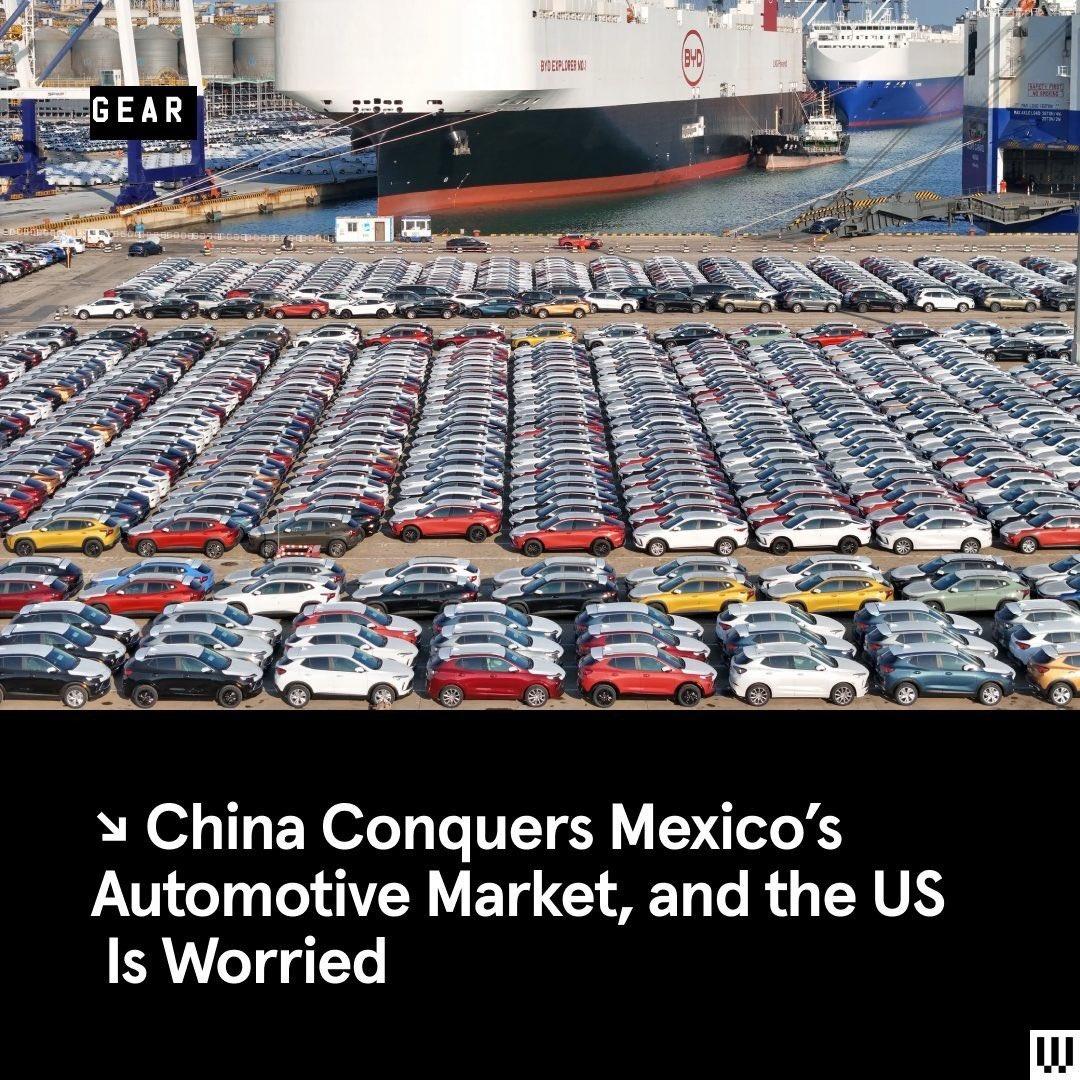China Conquers Mexico’s Automotive Market, and the US Is Worried
China’s automotive industry has taken Mexico by storm, a development that has sparked concerns among policymakers in the United States. As Chinese carmakers continue to expand their influence across international markets, their rapid penetration into Mexico’s automotive industry has raised eyebrows and set off alarm bells in Washington.
Over the past decade, China has emerged as the world’s largest automotive market. Its domestic car manufacturing industry has witnessed exponential growth, with a multitude of successful brands such as Geely, BYD, and Great Wall Motors gaining popularity globally. Now, China’s automotive giants have set their sights on Mexico, one of the United States’ most significant trading partners.
For decades, the United States has enjoyed a dominant position in Mexico’s automotive market, exporting millions of cars and auto parts annually. However, China’s increasing presence in the Mexican auto sector threatens to disrupt this longstanding relationship. In recent years, Chinese carmakers have made substantial investments in Mexico, establishing production facilities and forming partnerships with local companies.
One key advantage China holds over the United States in the Mexican automotive market lies in cost competitiveness. Chinese automakers have been able to produce vehicles at significantly lower prices due to lower labor costs and economies of scale. This price advantage has allowed them to gain a foothold in Mexico and lure customers away from American car brands.
Another factor contributing to China’s success in Mexico’s automotive market is the shift towards electric vehicles (EVs). Chinese automakers have positioned themselves as global leaders in EV technology, offering affordable electric cars that have gained substantial market share in China. This expertise has given them an edge as Mexico, like many other countries, seeks to reduce carbon emissions and incentivizes the adoption of EVs. Chinese manufacturers have seized this opportunity, offering a range of electric models that are appealing to environmentally conscious consumers.
The rise of China’s automotive industry in Mexico has stoked concern in the United States for several reasons. Firstly, it threatens American jobs, as Mexico serves as a key manufacturing hub for US carmakers. If Chinese cars continue to gain popularity in Mexico, demand for American-made vehicles and auto parts could decline significantly, potentially leading to job losses in the US auto sector.
The United States is also wary of China’s growing influence in its backyard. Mexico is an important market for American automotive exports, with more than $45 billion worth of vehicles and auto parts being shipped across the border annually. The possibility of losing market share to Chinese competitors directly impacts America’s economic interests.
Furthermore, there are concerns about China gaining access to valuable technological know-how through joint ventures with Mexican companies. The United States fears the transfer of advanced manufacturing techniques and intellectual property rights to Chinese firms, which could then be used to strengthen China’s position in the global automotive industry, ultimately becoming a direct competitor to American manufacturers.
In response to China’s encroachment on Mexico’s automotive market, the United States must find ways to remain competitive. One crucial step is to invest in research and development to foster innovation and technology in the American automotive sector. By continuing to prioritize and invest in cutting-edge technologies, the United States can maintain its position as a global leader in the industry.
Strengthening partnerships with Mexico is also vital for the United States to mitigate China’s influence. Collaborative efforts, such as improving trade agreements and jointly developing technological advancements, can help protect American interests in Mexico’s automotive market.
Furthermore, the United States must work proactively to enhance its own cost competitiveness. Exploring ways to increase efficiency and reduce production costs will be crucial for American carmakers to remain competitive in the face of China’s cost advantage.
The entry of China into Mexico’s automotive market is both a testament to China’s growing global economic influence and a warning sign for the United States. As Mexico increasingly becomes a battleground for automotive dominance, it is vital for policymakers in Washington to take proactive measures to safeguard American interests while promoting a healthy and competitive global automotive industry.

